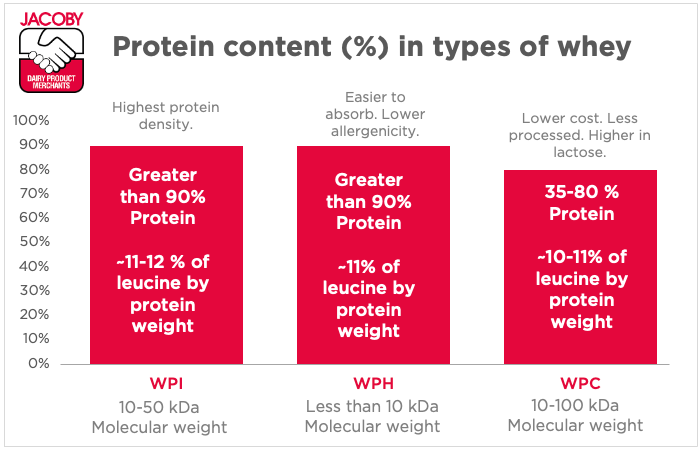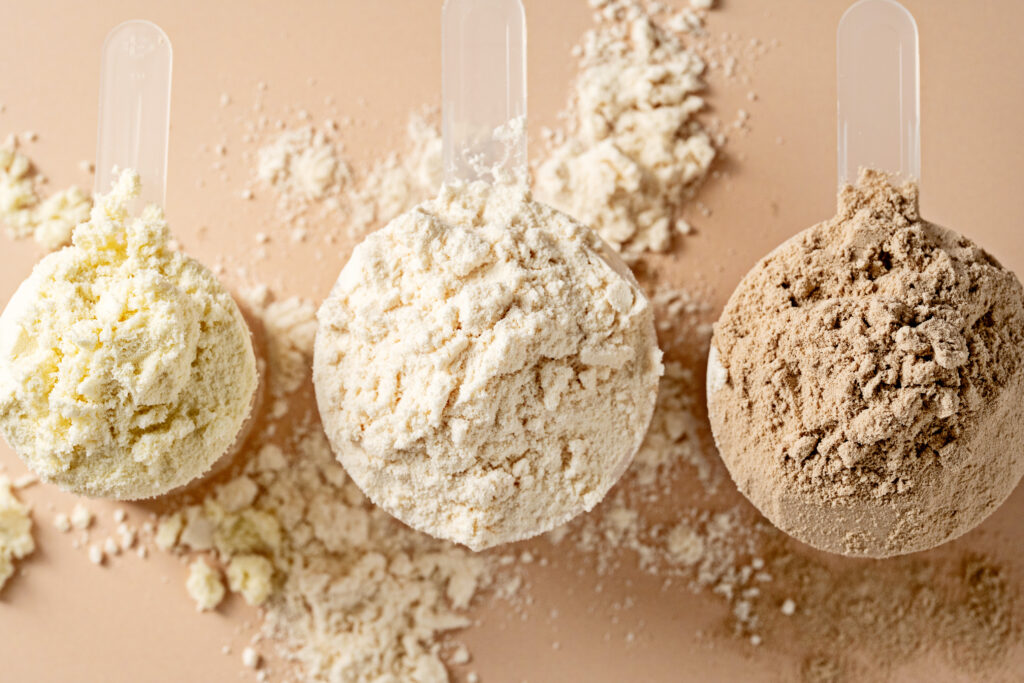
A decade ago, whey protein’s biggest champions were bodybuilders and CrossFit buffs.
But the times they are a-changin’.
The explosive popularity of GLP-1 drugs like Ozempic and Wegovy is helping millions curb food cravings and reducing Americans’ calorie intake.
But with less food comes a new nutritional challenge: preserving muscle mass.
The prescription? More protein. Ideally, the complete, highly bioavailable kind.
Cue the whey.
Why GLP-1 users need more protein
GLP-1 drugs work by slowing gastric emptying and signaling satiety, reducing the calories you eat.
But that relief from food cravings can come at a physical cost. Appetite suppression can lead to underconsumption of essential nutrients, especially protein. Without enough protein, muscle degradation can set in. A lack of muscle is a critical concern for long-term health.
Doctors typically advise GLP-1 users to eat 1.2 to 2.0 grams of protein per kilogram of body reference weight – well above the standard 0.8 g protein/kg/day for healthy adults.
In the July 2025 episode of The Milk Check, Dr. Chris Cifelli, Senior Vice President of Nutrition Research at Dairy Management, Inc., shared his expertise on why high-quality proteins are a key dietary component for GLP-1 users. “When you lose weight, especially weight rapidly, your body doesn’t care if you’re losing fat or muscle. So, you’ll start losing both. And that’s why protein is so important.”
Whey vs. plant-based proteins: The nutritional edge
But the kind of the protein you eat matters.
“Whey and casein are both complete proteins,” says Dr. Cifelli. “They have all the essential amino acids we need, and they have them in the right proportions to support muscle growth and development.”
Whey has many benefits for today’s wellness-focused consumers.
- Whey supports muscle growth and maintenance. Whey is a food rockstar, especially for weight loss while preserving muscle. Whey is particularly rich in leucine, which helps slow muscle degradation and helps in building new muscle. This leucine content puts whey way ahead of many plant proteins in driving protein synthesis during calorie restriction.
- Whey is easy to digest and has a fuller amino acid profile. Whey is generally a more digestible form of protein than plant-based proteins. It also has more amino acids because microfiltration and ultrafiltration better preserve whey’s amino acid profile. Processing of plant-based proteins involves high heat or other processes that reduce their nutritional quality. To get the full protein benefit, you must vary the plant-based protein you’re eating to approximate the functional benefits of whey.
- Whey has beneficial compounds that plant proteins don’t. Whey protein includes bioactive compounds, like milk fat globule membrane (MFGM), which support immune function, cognitive health, muscle repair and inflammation management – functional properties not typically attributed to most plant protein isolates.

In summary, dairy-based proteins outstrip plant-based proteins in components that support muscle repair and growth.
Whey processing methods matter, too.
A market divided: WPI, WPH, WPC and native whey
Different whey types vary in protein content and digestibility.
- Whey Protein Isolate (WPI). WPI sits at the top of the whey stack for protein density. With more than 90% protein and minimal lactose and fat, it’s used in sports and clinical nutrition for those who need a high protein content without the extra calories.
- Whey protein hydrolysate (WPH). WPH contains smaller peptides in a pre-digested form. It’s absorbed faster than WPI or WPC, making it especially useful for individuals with limited appetite, digestive sensitivity, or higher protein needs in small meals.
- Whey Protein Concentrate (WPC). WPC holds its ground at the more mainstream level. It offers broader functionality and cost-efficiency. WPC is used in protein bars, shakes, and dairy snacks.

Another type of whey is native whey. Unlike the other forms of whey we’ve looked at, native whey is made from directly from milk instead of cheese whey. It’s known for its purity and functional benefits and may have a greater potential to stimulate muscle recovery than other types of whey. But it’s not yet a high-volume product. In the future, we may see its market share grow as people continue to look for foods with strong wellness functionality.
We’re watching you, whey
GLP-1 drugs aren’t just changing waistlines. They’re redefining the nutrition market.
As more Americans and global consumers prioritize protein quality and functional nutrition, whey is poised to take center stage.
Whey may have started in the gym, but its future lies in medicine cabinets, hospitals, and mainstream pantries. For the U.S. dairy industry, it’s more than a trend; it’s a transformation.

The whey forward: Partner with T.C. Jacoby & Co.
If you’re buying or selling U.S. dairy products at scale, we can help. We’re obsessed with dairy, and we can help you with global trading, risk management, product planning/balancing, and strategic consulting. We offer dairy cooperative support, including administrative support, payroll, accounting, logistics, marketing, and Federal Milk Marketing Orders pooling.
Keep up with the latest news with our weekly Market Reports or our 2x/month podcast, The Milk Check.
